Contents
- 1 Introduction: Spain Beyond the Obvious
- 2 The Allure of Hidden Gems: Why Explore Off the Beaten Track?
- 3 Magical Mountain Villages: Where Time Stands Still
- 4 Underrated Spanish Beaches: Sun, Sand, and Seclusion
- 5 Cultural Treasures Far From Madrid and Barcelona
- 6 Spectacular Natural Parks Spanish Locals Love
- 7 Secret Spanish Islands Few Tourists Visit
- 8 Unexplored Wine Regions for Real Connoisseurs
- 9 Castles and Fortresses: Hidden Glories of Spanish History
- 10 Culinary Delights Beyond Tapas and Paella
- 11 Secret Cities Bursting With Local Charm
- 12 Spain’s Hidden Art and Architecture
- 13 Off-The-Grid Hiking Adventures
- 14 Enchanting Festivals You Won’t Find in Guidebooks
- 15 Spain’s Quirkiest Museums for Curious Minds
- 16 Where to Sleep: Unique Stays in Unlikely Places
- 17 Getting Off the Grid: Eco-Tourism and Rural Escapes
- 18 Insider Tips: Making the Most of Hidden Spain
- 19 Common Travel Mistakes to Avoid When Chasing Hidden Gems
- 20 Conclusion: Start Your Own Spanish Adventure Unveiled
Introduction: Spain Beyond the Obvious
Hidden gems in Spain, such as charming pueblos and secret Spain destinations, are what turn a simple trip into a story you’ll be telling for years. Sure, everyone knows the big hitters: Barcelona’s Sagrada Familia, Seville’s flamenco dancers, Ibiza parties, and Madrid’s art museums. But dig a little deeper, and Spain reveals treasures that rarely appear on glossy travel brochures. From sleepy villages clinging to mountainsides to secret beaches hugged by forest, there’s a whole other layer of Spain waiting quietly to be found. If you want a Spain untouched by crowds, full of surprises and local flavors, this guide will help you get there.

The Allure of Hidden Gems: Why Explore Off the Beaten Track?
Why go beyond Spain’s postcard images? For starters, those quiet corners let you connect with real Spanish life. In these places, you can wander empty cobbled streets, hear church bells, and find tapas bars where no menu is in English. You meet people eager to show you the best their hometowns offer, from family-run cheese shops to ancient festivals almost no outsider attends. You also escape packed plazas and lines, swapping them for peaceful moments, secret swimming spots, or a hillside picnic with jaw-dropping views.
Choosing less-visited spots helps spread the benefits of tourism, too. It supports small businesses in rural areas and protects destinations from overtourism. Exploring these hidden gems means your trip makes a positive mark—and leaves you with richer memories.
Magical Mountain Villages: Where Time Stands Still
Some of Spain’s oldest and most beautiful villages, including charming pueblos con encanto, are tucked away where the mountain air is clear and quiet, offering a secret Spain spot for tourists.
Setenil de las Bodegas: The Village Under the Rocks
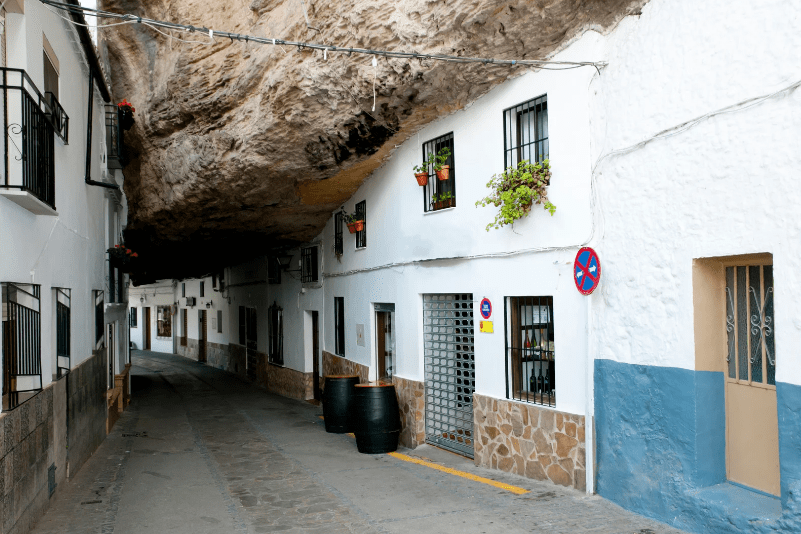
Setenil de las Bodegas is a picture-book village in Andalucía, a hidden gem. Instead of being built next to the cliffs, its whitewashed houses are actually carved into and beneath hulking slabs of rock. Walk through the old town, and you find streets where it feels like boulders could tumble at any moment—but they never do. Life here moves calmly and steadily, just like it has since the time of Moorish rule. Setenil’s cozy cafés under the overhanging stones serve flaky pastries, fresh olive oil, and local wines, making it one of the charming pueblos con encanto in southern Spain. It’s photogenic, of course, but also deeply peaceful.
Albarracín: A Medieval Masterpiece
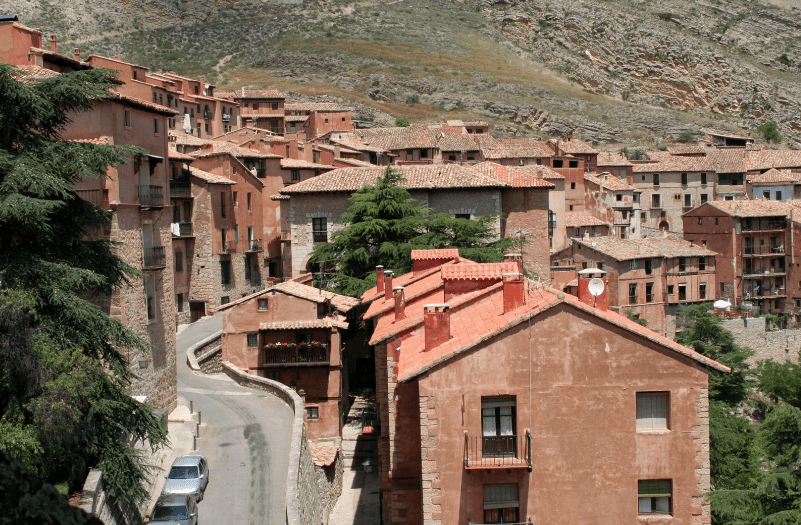
Perched above a bend in the river, Albarracín is a hidden gem with terracotta walls, winding lanes, and defensive towers. Often named one of Spain’s prettiest villages, it feels like stepping onto a medieval film set—minus the directors. Rose-red houses cling to steep hills, and the view from the ancient castle is breathtaking, especially at sunset. Artists, historians, and hikers all find something magical here, making it one of the charming pueblo destinations in Spain. Evenings in Albarracín bring quiet, with the only sound coming from the river and your own footsteps echoing down narrow passageways.
Underrated Spanish Beaches: Sun, Sand, and Seclusion
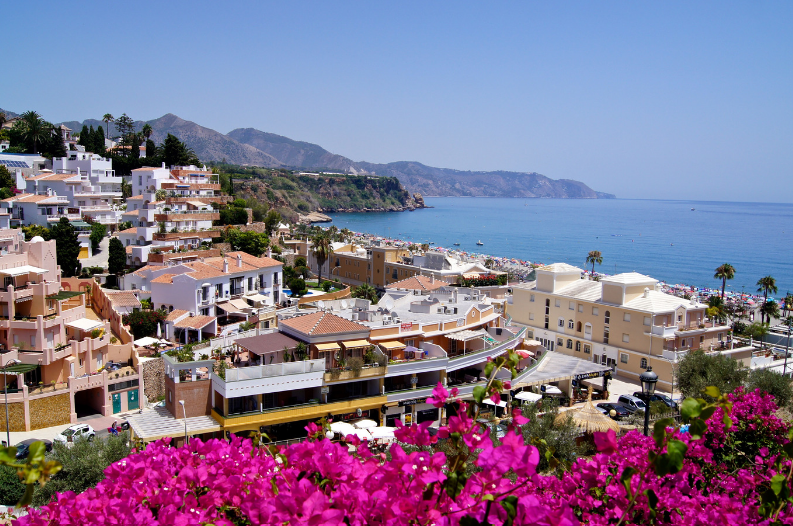
Spain’s beaches are world-famous, but there’s more than the Costa del Sol; hidden Spain offers secret coves and quiet stretches of sand that await those willing to explore beyond popular Spain destinations.
Playa de Gulpiyuri: Europe’s Inland Beach
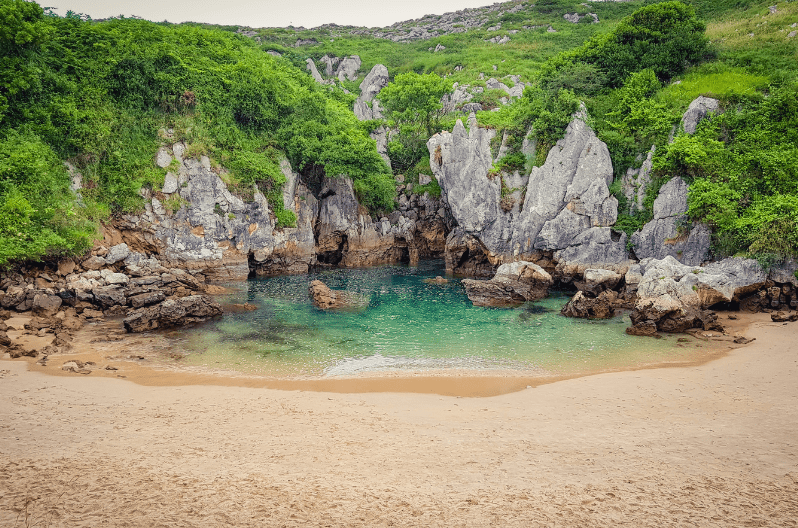
Hidden among the green meadows of Asturias, Playa de Gulpiyuri is perhaps one of the most unusual Spanish destinations. It sits inland, connected to the Bay of Biscay by a series of underground caves. When the tide is right, salty water rushes through the rock, filling a little crescent-shaped lagoon. Golden sand, emerald grass, and none of the usual seaside crowds make it perfect for a quiet escape and some stunning photographs of Spain vacation spots.
Cala Fonda (Waikiki): Tarragona’s Secret Shoreline

Cala Fonda, known as Waikiki by locals, exemplifies the beauty of hidden Spain and proves that paradise still exists in Catalonia. Surrounded by pine forest and cliffs, this golden beach is accessible after a peaceful trek through nature. There’s no bar blasting music or sun loungers—only you and the gentle waves. It’s a favorite among free-spirited locals, especially on warm afternoons. If you seek solitude, clear water, and soft sands, this secret Spain spot has it all.
Cultural Treasures Far From Madrid and Barcelona
Not every masterpiece is in a big city. Some of Spain’s richest history sits quietly in small towns and walled cities that tourists often skip.
Cáceres: Spain’s Medieval Movie Set

Cáceres looks like a movie set—because it often is. Game of Thrones fans might recognize its ancient streets and honey-colored stone. Old Town, a hidden Spanish gem, is a maze of towers, arches, and mansions built between the 12th and 16th centuries. Step off the Plaza Mayor and wander into peaceful courtyards where storks nest on church spires. Tasting local Torta del Casar cheese or rich Extremaduran ham adds another layer to your journey here, making it one of the charming pueblos con encanto in Spain.
Úbeda and Baeza: Renaissance Rivals

These neighboring towns in Jaén province sparked a local competition during the Spanish Renaissance. Their wealthy families raced to build the most beautiful houses, squares, and churches. Today, Úbeda and Baeza are hidden Spanish destinations, open-air museums of elegant palaces and stone plazas, but most visitors to Andalucía miss them. You can grab a coffee on a sunwashed terrace, surrounded by more history than in many capital cities.
Spectacular Natural Parks Spanish Locals Love
Spain cares deeply for its green spaces, and some of its most stunning scenery, including secret Spain destinations, is hidden well away from crowds and main roads.
Ordesa y Monte Perdido National Park: The Pyrenean Wonder
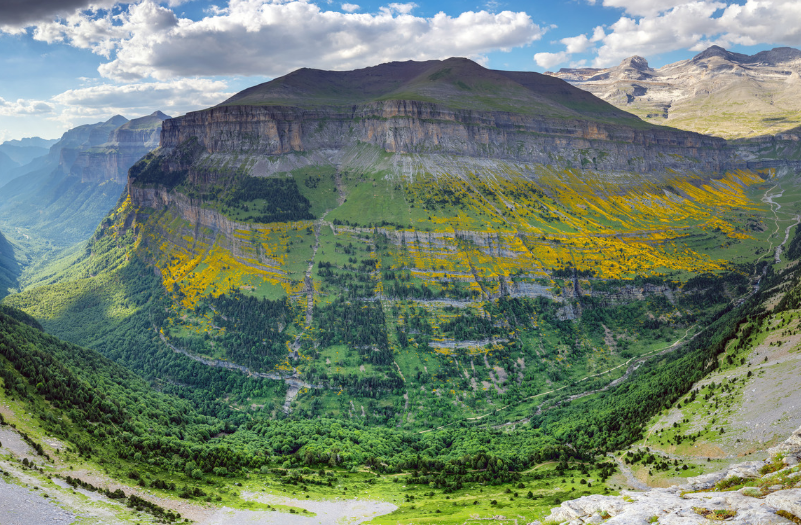
Picos and canyons, wildflowers and ibex—Ordesa y Monte Perdido National Park is a dream for hikers and nature photographers. Known as one of the hidden Spain destinations, it features lush valleys in spring and snow-topped peaks well into summer. Trails pass turquoise rivers, beech forests, and curious wildlife. The main viewpoint, called Cola de Caballo (Horse’s Tail), rewards any effort with unforgettable scenes, showcasing the park’s stunning landscapes.
Garajonay National Park: La Gomera’s Lush Heart
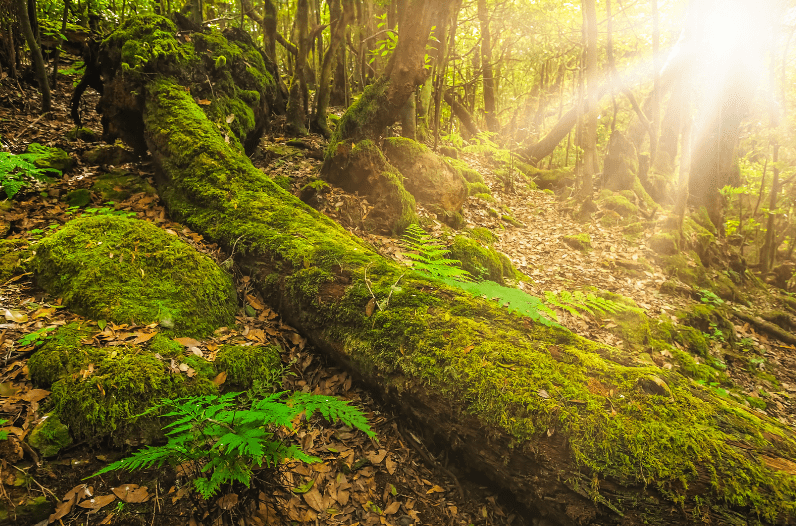
A short ferry from Tenerife leads to La Gomera, one of Spain’s quiet Canary Islands. Its heart is Garajonay National Park, a shaded world of twisted laurel trees and misty pathways, making it one of the hidden destinations in Spain for nature lovers. The air always smells fresh, and light leaks in gently through green leaves. Some trails here date back to the Guanches, the island’s first people, enhancing the cultural heritage of this enchanting locale.
Secret Spanish Islands Few Tourists Visit
The Spanish archipelagos offer more than sun and sangria, revealing hidden Spanish destinations that remain peaceful, even in summer.
Islas Cíes: The Galician Caribbean

Off the coast of Vigo are the Islas Cíes, part of a protected national park that showcases some of the most stunning natural wonders in Spain. Bright white sand meets clear blue water, while pine woods offer shelter from the sun, making it one of the secret Spanish destinations worth exploring. Ferries bring a limited number of visitors each day, ensuring it never feels crowded. There’s not much here but trails, birds, two small cafes, and nature at its best. Stay overnight at the low-key campground to watch stars over the Atlantic.
Tabarca Island: Alicante’s Historic Haven
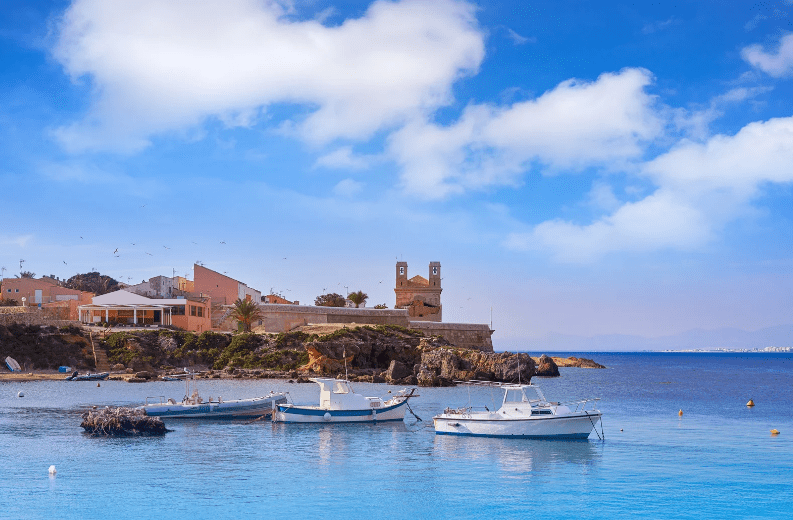
Tabarca Island, near Alicante, is one of the charming pueblo destinations in Spain, famous in local circles for its calm, especially just before sunset when the last ferry leaves. Once a pirate base, it’s now a tiny fishing village with old city walls. You can snorkel near the marine reserve, order seafood paella from the harbor, or wander empty alleys full of wildflowers. Visits here are slow, simple, and always end with a smile, making it a perfect secret Spain spot.
Unexplored Wine Regions for Real Connoisseurs
Spain’s wine story runs far deeper than Rioja or Ribera del Duero, with some of its best pours hailing from hidden Spanish destinations that most travelers never try.
Ribeira Sacra: Dramatic Vineyards Over Rivers

Vineyards clinging to impossibly steep river gorges—this is the secret of Galicia’s Ribeira Sacra region, one of the hidden Spain destinations. Winemakers harvest by hand along ledges high above the Sil and Miño rivers. The landscape is breathtaking; the wines, mostly Mencía reds, are robust, aromatic, and almost impossible to find outside Spain. Small bodegas welcome visitors for tastings. Little nearby towns like Monforte de Lemos and Chantada serve hearty Galician food to go with your glass, showcasing the cultural heritage of this stunning region.
Somontano: A Flavourful Aragonese Hideaway
Somontano, a hidden gem among Spanish destinations, means “under the mountain,” and this wine region sits below the mighty Pyrenees. Hot days, cool nights, and rocky soil help create complex reds and crisp whites. Try the award-winning Enate, Viñas del Vero, or the family-run Bodega Pirineos. Tastings here are uncrowded and friendly—just local families and a few curious travelers. Pair your wine with grilled lamb, local cheese, or creamy rice dishes.
Castles and Fortresses: Hidden Glories of Spanish History
Spain’s landscape bristles with castles—some famous, many forgotten, each a hidden Spain gem woven into their stones.
Castillo de Loarre: The Fortress Above the Clouds
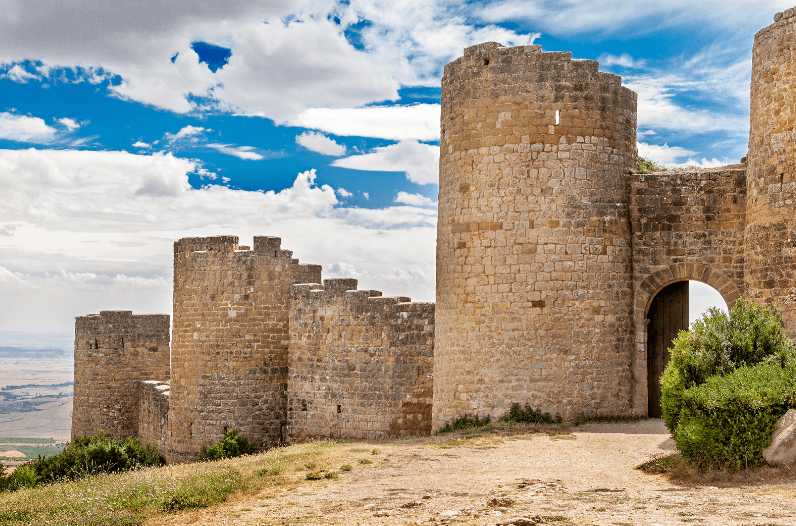
Perched above the plains of Aragón, Castillo de Loarre is one of the most stunning castle attractions in Spain. Its thick walls, round towers, and Romanesque chapel have stood for nearly a thousand years. Early mornings often bring low-lying mist, making it look like the castle truly floats above the clouds. Inside, spiral staircases, secret passageways, and wide views across the valley offer echoes of knights and ancient battles, making it a must-see in the hidden Spain destinations. Movie lovers may spot its setting from the film ‘Kingdom of Heaven.’
Alarcón: The Walled Jewel of Castilla-La Mancha
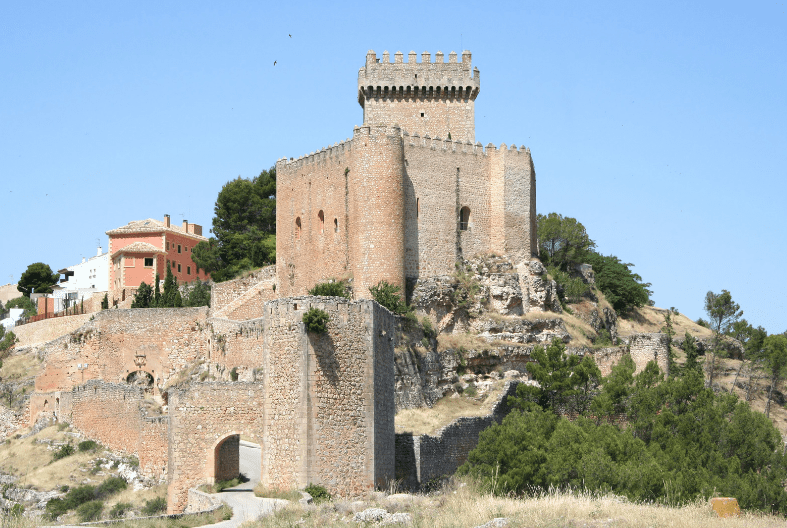
Alarcón is a small town surrounded by stone walls, perched above a deep gorge of the Júcar River. Enter across a narrow bridge, and you’ll find a perfectly preserved medieval world that showcases the charm of hidden Spain. It’s a castle, now a Parador hotel, that once kept invaders at bay and now offers stylish lodgings for travelers exploring Spanish destinations. The winding streets hold art murals, tiny chapels, and family-run inns. Spend the night, and it feels like you’ve traveled back in time.
Culinary Delights Beyond Tapas and Paella
There’s much more to Spanish food than what you see in city tapas bars, as each region boasts its own unique flavors and traditions, making it one of the top destinations.
Extremadura’s Jamón Ibérico Producers
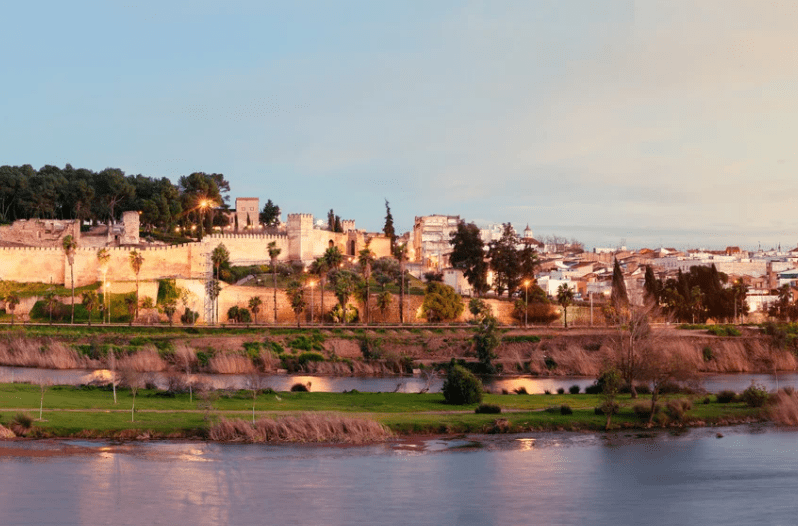
Extremadura is true jamón country, a hidden gem. Here, black-footed Iberian pigs roam oak forests, snacking on acorns. Small family farms hand-craft their dry-cured hams in the cool mountain air. The result? Some of the world’s best jamón ibérico are prized for their nutty taste and marbled texture. Tour a farm near Jabugo or Montánchez to see the process—and sample slices cut so thin they melt on your tongue.
Asturian Cider Houses: Sip Like a Local

If you find yourself in northern Spain, particularly in the charming pueblo of Nava, try cider the Asturian way. Sidrerías—cider houses—serve natural, slightly fizzy apple cider. Tradition calls for it to be poured from high above your glass in a long stream, adding bubbles and a mild tang. Pair it with cheese, chorizo, or fabada (a rich bean stew). Locals say some of Spain’s best cider can be found in hidden Spain destinations like Villaviciosa, far from the bigger, busier cities.
Secret Cities Bursting With Local Charm
Not all Spain’s charmers are big cities; hidden Spain destinations like charming pueblos con encanto often shine in their own unique ways.
Lugo: Walk the Only Complete Roman Walls

Lugo, a hidden gem in Galicia, is ringed entirely by ancient Roman walls, making it one of the most captivating Spanish destinations. Walk the full circuit—over two kilometers—and enjoy views of the old city and green hills beyond. Inside the walls, Lugo’s winding streets, friendly cafes, and lively local markets feel untouched by time, embodying the charm of charming pueblos con encanto. Don’t miss its famous octopus—the most tender “pulpo” around, served at rustic taverns each night.
Zamora: Romanesque Art Capital
Zamora sits above the Duero River, showcasing an impressive skyline of domed churches and stone bridges, making it one of the hidden destinations in Spain. The city boasts the highest number of Romanesque churches in Europe, each with unique patterns, frescoes, and legends. Evenings in Zamora are peaceful, with shaded squares where locals sip wine and swap stories, creating a charming pueblo atmosphere.
Spain’s Hidden Art and Architecture
Spain is more than Gaudí and Picasso; in charming pueblos con encanto, unique art and breathtaking buildings await.
Santillana del Mar: The Town of Three Lies
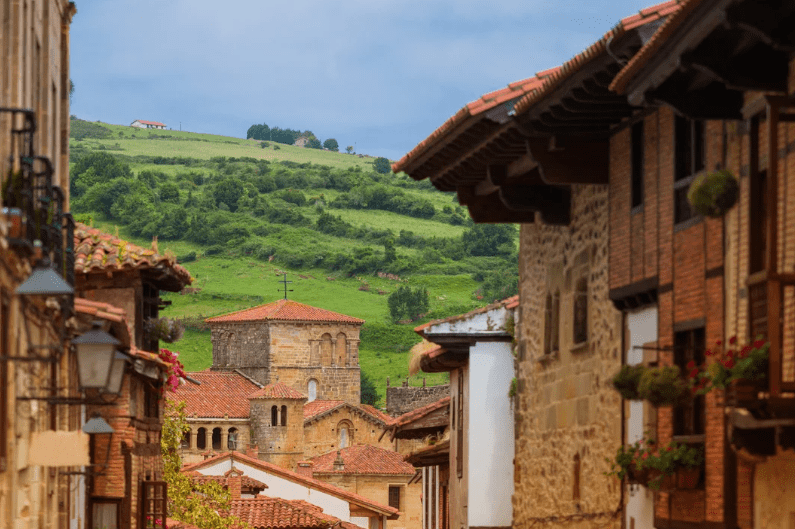
Despite its name, Santillana del Mar is neither a saint (Santa), nor flat (llana), nor by the sea (del Mar). However, this charming pueblo is one of the secret Spanish destinations that boasts cobblestoned streets, beautiful houses, and centuries-old churches. Nearby, the Altamira cave, known as the “Sistine Chapel” of ancient cave art, adds to the allure of this cultural heritage site. Time your visit for early morning or late evening, and it feels like the Middle Ages never ended.
Cuenca’s Hanging Houses: Marvel of Medieval Engineering

Cuenca’s “Casas Colgadas” or Hanging Houses dangle impressively over a deep gorge, making it one of the must-see destinations. Built during the 14th century, these homes seem to defy gravity, with their wooden balconies over the edge of a cliff. Today, a couple of museums inside, but the view from the bridge across the ravine is unforgettable, showcasing the cultural heritage of this hidden Spanish gem.
Off-The-Grid Hiking Adventures
For those who like to walk on the wild side, Spain has hiking routes that showcase stunning landscapes and dramatic views, often empty.
Caminito del Rey: Once The World’s Most Dangerous Walkway

Once called the world’s scariest hike, Caminito del Rey (The King’s Little Pathway) is much safer now but still spectacular. It clings to sheer rock walls above the turquoise Gaitanes Gorge, making it one of the must-see destinations in Spain. The cliffside boardwalks—hundreds of feet up—offer heart-pounding views below, showcasing the stunning landscapes that define southern Spain. It’s a thrill without being unsafe, and a bucket-list tick for hikers and adventurers.
Ruta del Cares: The Gorge Trail Spectacle
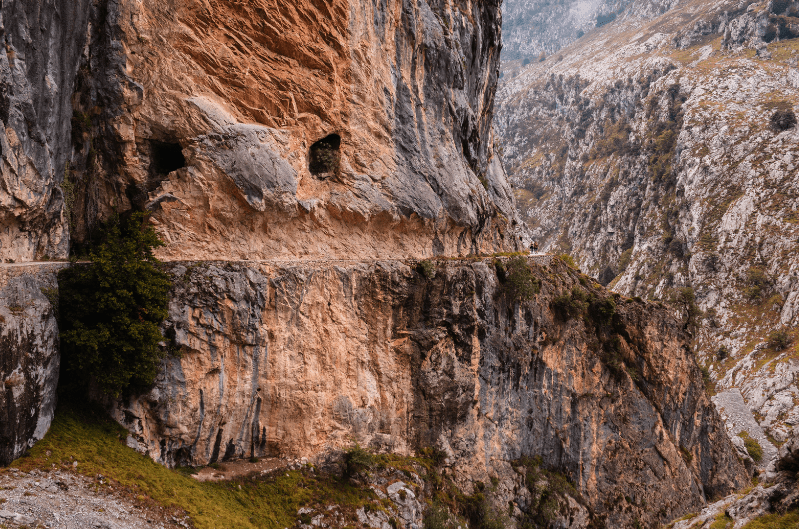
Winding between Asturias and León, the Ruta del Cares is a dramatic trail carved straight into the rocky mountainside. This path in Spain showcases the stunning landscapes of the Picos de Europa, where hikers can experience the hidden Spain, passing narrow ledges, tunnels, and waterfalls. Hikers come for the wild scenery, shy mountain goats, and a sense of quiet rarely found elsewhere. Pack a picnic and take your time—the journey is as stunning as the destination.
Enchanting Festivals You Won’t Find in Guidebooks
Some of Spain’s most memorable traditions take place in charming pueblos con encanto, far from tourist crowds, in villages and country towns full of personality.
Fiesta de la Trashumancia: Shepherds in Madrid

Every autumn, shepherds in Spain still follow ancient migration trails—called “cañadas”—even through the heart of modern Madrid. The Fiesta de la Trashumancia sees flocks of sheep parade past the Prado Museum and the city’s grand boulevards, while locals in traditional dress celebrate with dances and music. This vibrant festival highlights the charm of hidden Spain, reminding visitors that rural customs still thrive in Spain’s biggest city.
The Medieval Festival of Briones
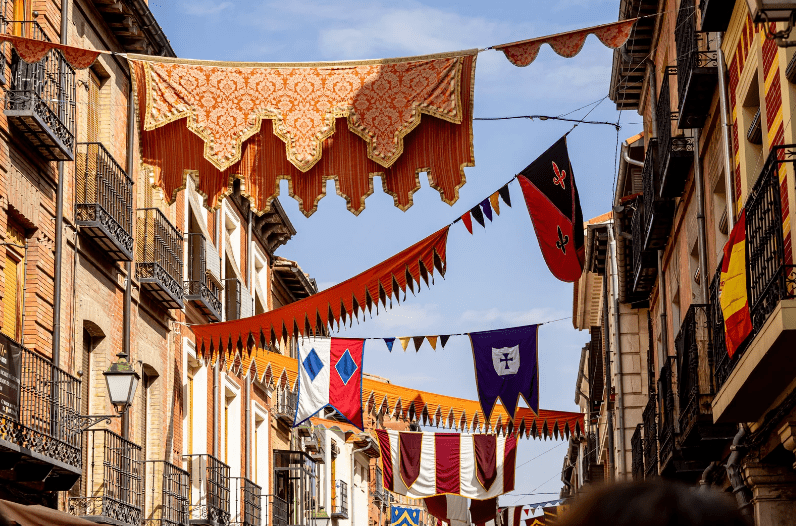
The hilltop village of Briones in La Rioja transforms each June for its medieval festival, showcasing the charm of hidden Spain. Locals dress in period costumes, tourneys are staged, and craftsmen fill the square, embodying the rich cultural heritage of this Spain destination. Food stalls offer spit-roast lamb, and minstrels play old tunes, creating a joyful atmosphere that reflects Spanish hospitality.
Spain’s Quirkiest Museums for Curious Minds
Spanish museums offer surprising collections that highlight hidden Spain and its rich cultural heritage.
Museo de las Brujas: Witchcraft in Zugarramurdi

Near the French border, Zugarramurdi, one of the hidden Spanish destinations, attracts visitors for its dark history of witch trials in the 17th century. The town’s Museo de las Brujas (Witch Museum) offers a look at local myths, herbal cures, and the tragic stories of those accused, making it a unique secret spot.
Museo del Juguete: Toy Box of Childhood Memories

In the Catalan town of Figueres, the Toy Museum (Museo del Juguete) holds thousands of playthings collected over decades. Tin trains, wooden dolls, board games, and even toys once owned by Salvador Dalí fill its shelves. This charming spot is a nostalgic gem, perfect for families or anyone seeking a delightful experience in Spain destinations.
Where to Sleep: Unique Stays in Unlikely Places
Forget chain hotels. In Spain’s hidden corners, your bed for the night can be as memorable as your sightseeing in charming pueblos con encanto.
Paradores in Former Monasteries and Castles

The Spanish government-run “Paradores” are historic buildings—monasteries, castles, and palaces—refurbished into luxury hotels, making them some of the most unique Spanish destinations. Sleep surrounded by ancient stone, dine in grand halls, and stroll manicured gardens. Smaller Paradores in towns like Cardona or Hondarribia offer a charming pueblo experience, blending comfort, history, and quiet.
Cave Houses of Guadix: Sleeping Underground
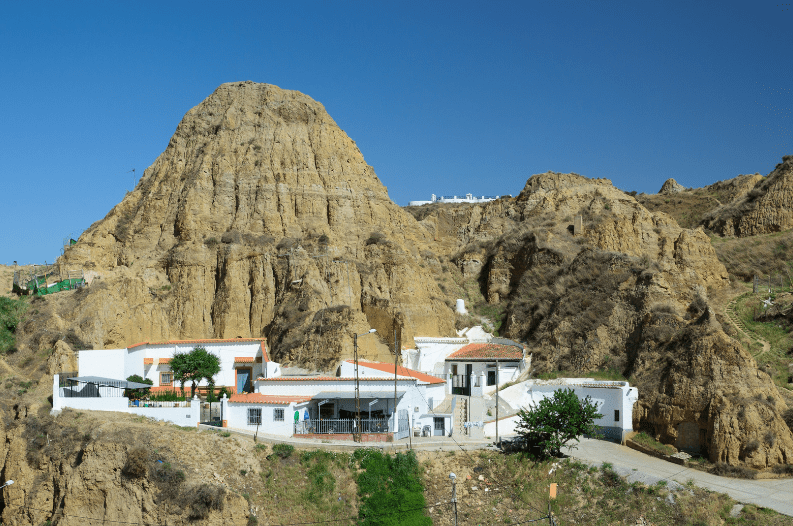
Granada’s Guadix region, one of the hidden Spain destinations, boasts a centuries-old tradition of “cuevas” or cave homes. Dug into soft hillsides, these charming pueblos con encanto stay cool in summer and cozy in winter. Many have modern touches—WiFi, hot showers, cozy beds—while keeping their cavernous charm, making it a unique Spain vacation spot.
Getting Off the Grid: Eco-Tourism and Rural Escapes

Spain’s countryside is not just for seeing, but also for experiencing in a way that’s gentle to nature. Rural guesthouses, organic farms, and eco-lodges welcome guests looking for real, hands-on escapes. From helping with olive harvests in Andalucía to learning cheese-making in Cantabria, these places teach you the rhythms of rural life. Stargazing, birdwatching, and guided hikes make great ways to spend days without screens or stress.
Brands like Rusticae focus on charming rural hotels, while turismorural, ecoturismo.com, and even Airbnb Experiences now feature sustainable stays and activities.
Insider Tips: Making the Most of Hidden Spain
-
Learn some Spanish or regional phrases: Locals open up when you make the effort.
-
Time your visit: Many hidden spots shine brightest in spring or autumn, when crowds thin and temperatures are pleasant.
-
Rent a car or use regional trains: Public transport can be sparse in rural areas; flexibility is key.
-
Pack for surprises: Bringing a rain jacket, sturdy shoes, and some snacks goes a long way.
-
Try local bars and family-run restaurants: Menus might only be in Spanish, but the food will surprise you.
-
Be respectful: These places aren’t theme parks—they’re real communities.
Common Travel Mistakes to Avoid When Chasing Hidden Gems
- Rushing: Hidden gems are best enjoyed at a slow pace. Don’t plan too much for one day.
- Relying on only Google reviews: Ask locals for recommendations—they know the real treasures.
- Forgetting cash: Small towns may not accept cards everywhere.
- Not booking ahead: Some special stays, like Paradores or remote cottages, fill up fast.
- Ignoring local customs: Dress modestly in villages, say hello, and watch for siesta hours.
Conclusion: Start Your Own Spanish Adventure Unveiled
Spain’s lesser-known wonders—magical villages, wild beaches, soaring castles, and secret festivals—offer a different kind of adventure. Beyond the famous cities and sites, you’ll taste, see, and feel the “real” Spain. These hidden gems, like charming pueblos con encanto, turn simple trips into lasting memories, filled with personal encounters and discoveries you just won’t find in guidebooks.
If you’re ready to move beyond the usual, embrace a little curiosity, patience, and an open mind. Permit yourself to get lost, to linger over a meal, to pause and chat with someone local. Explore with respect, and your Spanish adventure will not just be unique, but deeply meaningful.
Begin planning with flexibility in mind, pack practical gear, and always check local resources for updates. From mountain villages to lush parks, including Valderejo National Park, and even an unexpected festival or museum, let Spain’s secret side surprise you. In doing so, you’ll take home something more valuable than souvenirs: stories, friendships, and a sense of discovery that stays with you long after your journey ends.
1. What are some hidden gems in Spain worth visiting?
Spain has many hidden gems. Small villages, quiet beaches, and mountain towns show real local charm.
2. Where can I find hidden gems in Spain near Barcelona?
Near Barcelona, visit towns like Vic, Rupit, and Besalú. These hidden gems show medieval streets and local food.
3. What hidden gems in Spain are great for nature lovers?
Explore Ordesa Valley, Somiedo Natural Park, or Cazorla Mountains. These hidden gems are full of hiking trails and wildlife.
4. Which hidden gems in Spain are best for history lovers?
Merida’s Roman ruins, Cuenca’s hanging houses, and Úbeda’s old churches are hidden gems with rich history.
5. Are there hidden gems in Spain along the coast?
Yes, Costa de la Luz, Cabo de Gata, and Asturias beaches are coastal hidden gems with fewer tourists.
6. What hidden gems in Spain are best for food lovers?
Try tapas in Logroño, seafood in Galicia, or pintxos in San Sebastián’s old town. These are foodie hidden gems.
7. Which hidden gems in Spain are best for wine tasting?
La Rioja villages, Ribera del Duero, and Priorat are hidden gems where vineyards and wineries welcome visitors.
8. Are there hidden gems in Spain for art lovers?
Yes, Bilbao’s smaller galleries, Valencia’s street art, and Málaga’s Picasso sites are art-filled hidden gems.
9. What hidden gems in Spain can I visit in winter?
Sierra Nevada, Pyrenees villages, and Teruel are winter hidden gems offering snow, cozy towns, and hot drinks.
10. Which hidden gems in Spain are UNESCO sites?
Hidden gems include Cuenca, Alcalá de Henares, and Baeza. These UNESCO towns mix culture, architecture, and tradition.
11. Are there hidden gems in Spain near Madrid?
Yes, Segovia, Chinchón, and Ávila are close to Madrid. These hidden gems offer castles, plazas, and old walls.
12. What hidden gems in Spain are best for couples?
Albarracín, Ronda, and Cadaqués are romantic hidden gems. Their streets, views, and sunsets make great couple spots.
13. Which hidden gems in Spain are good for families?
Families enjoy Asturias villages, Cantabria caves, and Extremadura towns. These hidden gems mix fun, history, and nature.
14. What hidden gems in Spain are least crowded?
Visit Teruel, Jaén, and Lugo. These hidden gems stay quiet, far from Spain’s busier tourist hubs.
15. Are there hidden gems in Spain with castles?
Yes, Cardona, Belmonte, and Loarre castles are hidden gems where history and views meet.
16. Which hidden gems in Spain are good for road trips?
Andalusia’s white villages, Basque fishing towns, and Castilla-La Mancha plains are road trip hidden gems.
17. What hidden gems in Spain are best for hiking?
Picos de Europa, Montserrat, and Garrotxa are hiking hidden gems with trails, cliffs, and lush forests.
18. Are there hidden gems in Spain for beach lovers?
Yes, Playa de Gulpiyuri, Rodas Beach, and Calblanque Park are beach hidden gems with clear water.
19. What hidden gems in Spain are off the beaten path?
Extremadura, Soria, and Almería deserts are hidden gems far from typical tourist crowds.
20. Which hidden gems in Spain are great for photography?
Toledo’s old bridges, Frigiliana’s white streets, and Setenil’s cave houses are picture-perfect hidden gems.


